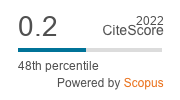Shakespeare in Chinese Cinema
DOI:
https://doi.org/10.2478/mstap-2013-0006Słowa kluczowe:
Shakespeare, adaptation, film, Chinese cinema, ”Hamlet”Abstrakt
Shakespeare’s plays were first adapted in the Chinese cinema in the era of silent motion pictures, such as A Woman Lawyer (from The Merchant of Venice, 1927), and A Spray of Plum Blossoms (from The Two Gentlemen of Verona, 1931). The most recent Chinese adaptations/spinoffs include two 2006 films based on Hamlet. After a brief review of Shakespeare’s history in the Chinese cinema, this study compares the two Chinese Hamlets released in 2006—Feng Xiaogang’s Banquet and Hu Xuehua’s Prince of the Himalayas to illustrate how Chinese filmmakers approach Shakespeare. Both re-invent Shakespeare’s Hamlet story and transfer it to a specific time, culture and landscape. The story of The Banquet takes place in a warring state in China of the 10th century while The Prince is set in pre-Buddhist Tibet. The former as a blockbuster movie in China has gained a financial success albeit being criticised for its commercial aesthetics. The latter, on the other hand, has raised attention amongst academics and critics and won several prizes though not as successful on the movie market. This study examines how the two Chinese Hamlet movies treat Shakespeare’s story in using different filmic strategies of story, character, picture, music and style.
Pobrania
Bibliografia
Burt, Richard. “Alluding to Shakespeare in L'Appartement, The King is Alive, Wicker Park, A Time to Love, and University of Laughs: Digital Film, Asianization, and the Transnational Film Remake.” Shakespeare Yearbook 17: Shakespeare and Asia. Eds. Lingui Yang, Douglas Brooks. New York: Edwin Mellen, 2010. 49-86.
Google Scholar
Huang, Alexander. Chinese Shakespeare. New York: Columbia University Press, 2009.
Google Scholar
Jameson, Frederic. The Geopolitical Aesthetic: Cinema and Space in the World System. Bloomington: Indiana University Press, 1995.
Google Scholar
Qin, Xiqing. Euro-American Film and Early Chinese Film. Beijing: China Movie Press, 2008.
Google Scholar
Wolte, Isabel. Research about Chinese Films adapted from Foreign Stories, Dissertation-Beijing Film Academy, 2009.
Google Scholar
Yang, Lingui. “Shakespeare’s Cultural Capital Made in China: From Pre-modern to Post-modern.” Shakespeare Yearbook 17: Shakespeare and Asia. Eds. Lingui Yang, Douglas Brooks. New York: Edwin Mellen, 2010. 87-110.
Google Scholar
Yang, Lingui and Douglas Brooks, eds. Shakespeare Yearbook 17: Shakespeare and Asia. New York: Edwin Mellen, 2010.
Google Scholar
Yuan, Qingfeng. The Cultural Tense of Black- and -White Films: Analysis of Early Chinese Films 1922-1936. Shanghai: Sanlian Press, 2009.
Google Scholar
Pobrania
Opublikowane
Jak cytować
Numer
Dział
Licencja

Utwór dostępny jest na licencji Creative Commons Uznanie autorstwa – Użycie niekomercyjne – Bez utworów zależnych 4.0 Międzynarodowe.











